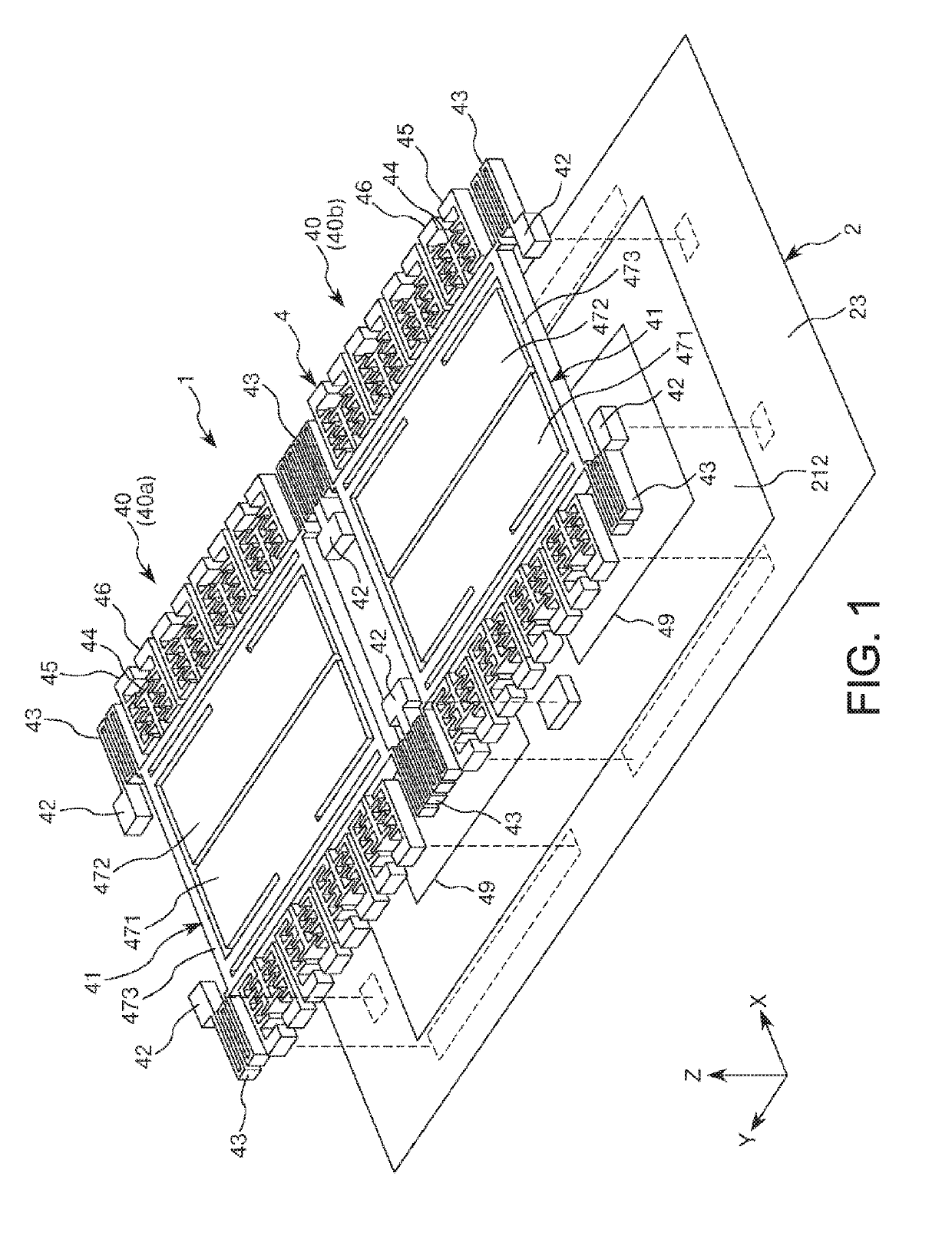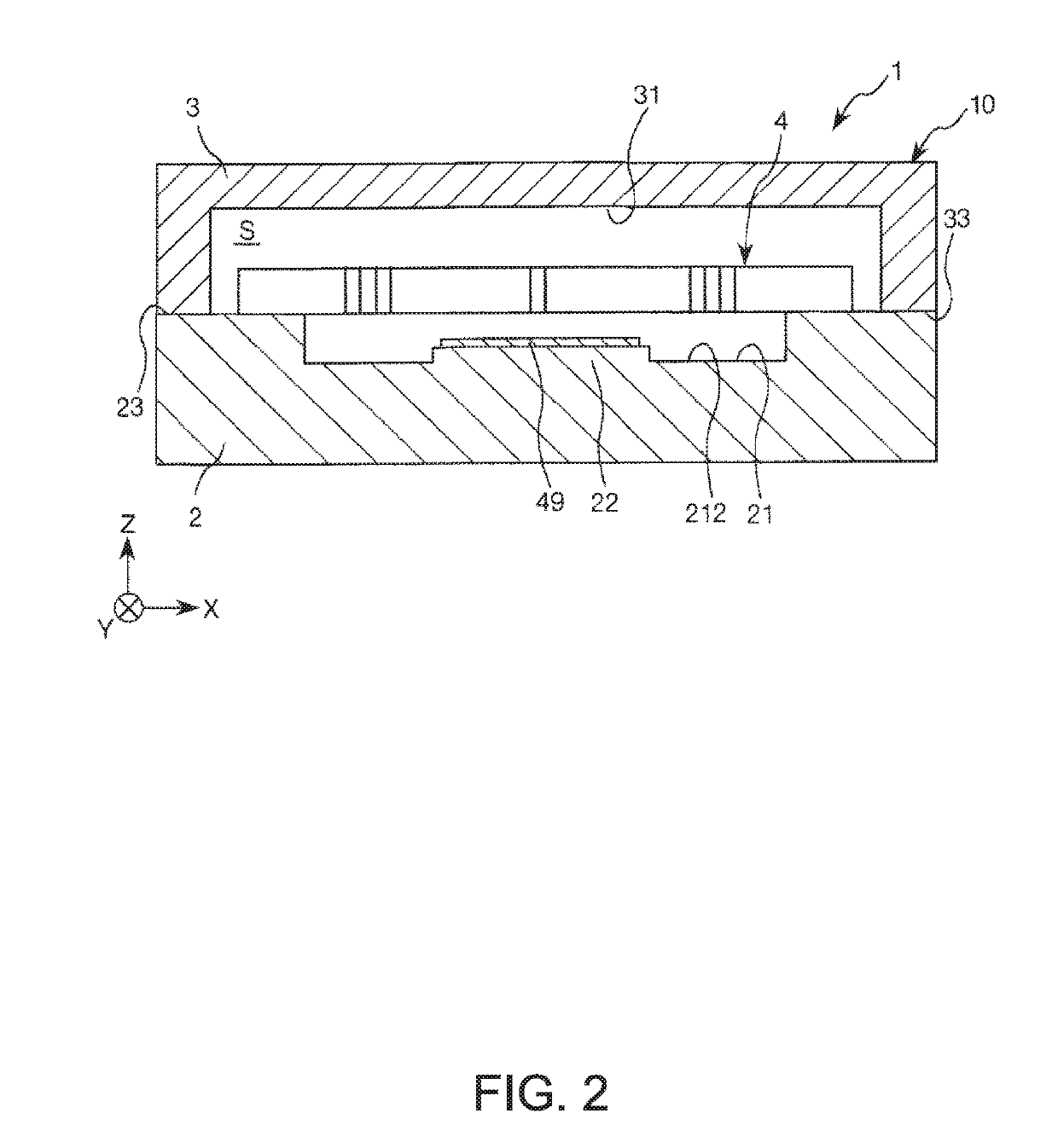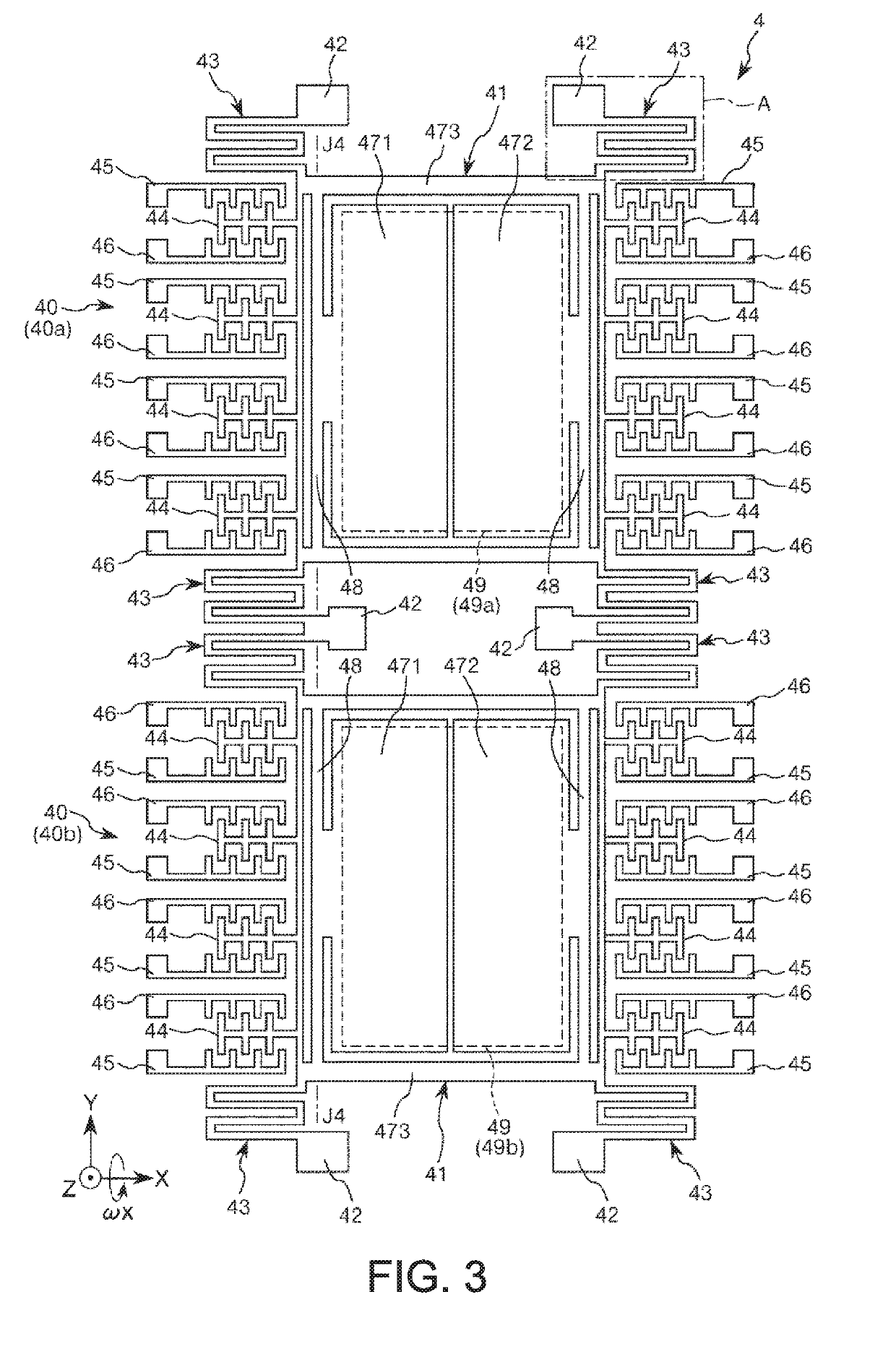Physical Quantity Sensor, Composite Sensor, Inertial Measurement Unit, Portable Electronic Apparatus, Electronic Apparatus, And Vehicle
- Summary
- Abstract
- Description
- Claims
- Application Information
AI Technical Summary
Benefits of technology
Problems solved by technology
Method used
Image
Examples
first embodiment
[0059]First, as an embodiment of the physical quantity sensor, a gyro sensor (angular velocity sensor) is described with reference to FIGS. 1, 2, and 3. FIG. 1 is a perspective view showing a schematic configuration of a gyro sensor (angular velocity sensor) according to a first embodiment of the physical quantity sensor. FIG. 2 is a cross-sectional view showing a schematic configuration of the gyro sensor shown in FIG. 1. FIG. 3 is a plan view schematically showing a gyro sensor element shown in FIG. 1. FIG. 1 schematically shows a substrate (base) and does not show a lid. In the following description of each embodiment of the physical quantity sensor below, an X-axis (third axis), a Y-axis (first axis), and a Z-axis (second axis) are provided as three axes orthogonal to each other. A direction along the X-axis is also referred to as “X-axis direction”. A direction along the Y-axis is also referred to as “Y-axis direction”. A direction along the Z-axis is also referred to as “Z-axi...
second embodiment
[0115]Next, a second embodiment of the physical quantity sensor will be described with reference to FIGS. 7 and 8. FIG. 7 is a plan view showing a schematic configuration of a gyro sensor according to the second embodiment of the physical quantity sensor. FIG. 8 is a plan view schematically showing a part (part C) of an elastic part shown in FIG. 7. In the description below, three axes orthogonal to each other, that is, X-axis, Y-axis, and Z-axis similar to those in the first embodiment are used. Also, in the description below, differences from the first embodiment are mainly described and similar matters are not described further in detail.
[0116]As shown in FIGS. 7 and 8, a gyro sensor 1A according to the second embodiment is an angular velocity sensor that can detect an angular velocity about the X-axis, as in the first embodiment. This gyro sensor 1A has a gyro sensor element (angular velocity sensor element) 505 as a sensor element, and a package (not illustrated) accommodating ...
third embodiment
[0133]Next, a third embodiment of the physical quantity sensor will be described with reference to FIGS. 9 and 10. FIG. 9 is a plan view showing a schematic configuration of a gyro sensor according to the third embodiment of the physical quantity sensor. FIG. 10 is a plan view schematically showing a part (part F) of an elastic part shown in FIG. 9. In the description below, three axes orthogonal to each other, that is, X-axis, Y-axis, and Z-axis similar to those in the first embodiment are used. Also, in the description below, differences from the first embodiment are mainly described and similar matters are not described further in detail.
[0134]As shown in FIGS. 9 and 10, a gyro sensor 1B according to the third embodiment is an angular velocity sensor that can detect an angular velocity about the X-axis or the Y-axis. This gyro sensor 1B has a gyro sensor element (angular velocity sensor element) 605 as a sensor element, and a package (not illustrated) accommodating the gyro senso...
PUM
 Login to View More
Login to View More Abstract
Description
Claims
Application Information
 Login to View More
Login to View More - R&D
- Intellectual Property
- Life Sciences
- Materials
- Tech Scout
- Unparalleled Data Quality
- Higher Quality Content
- 60% Fewer Hallucinations
Browse by: Latest US Patents, China's latest patents, Technical Efficacy Thesaurus, Application Domain, Technology Topic, Popular Technical Reports.
© 2025 PatSnap. All rights reserved.Legal|Privacy policy|Modern Slavery Act Transparency Statement|Sitemap|About US| Contact US: help@patsnap.com



